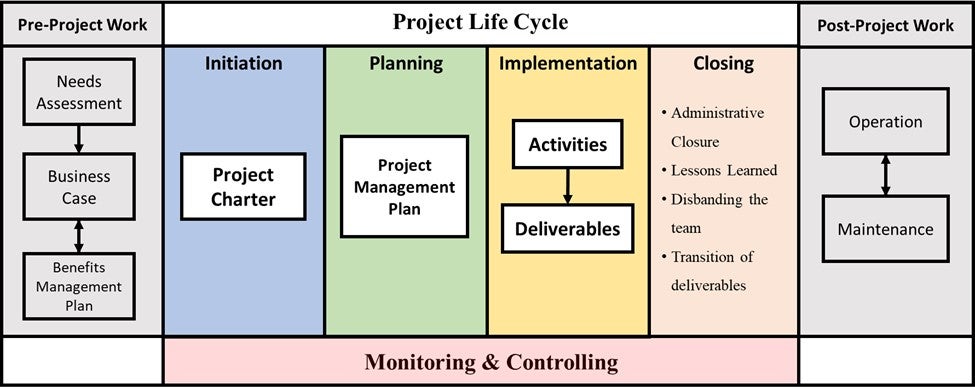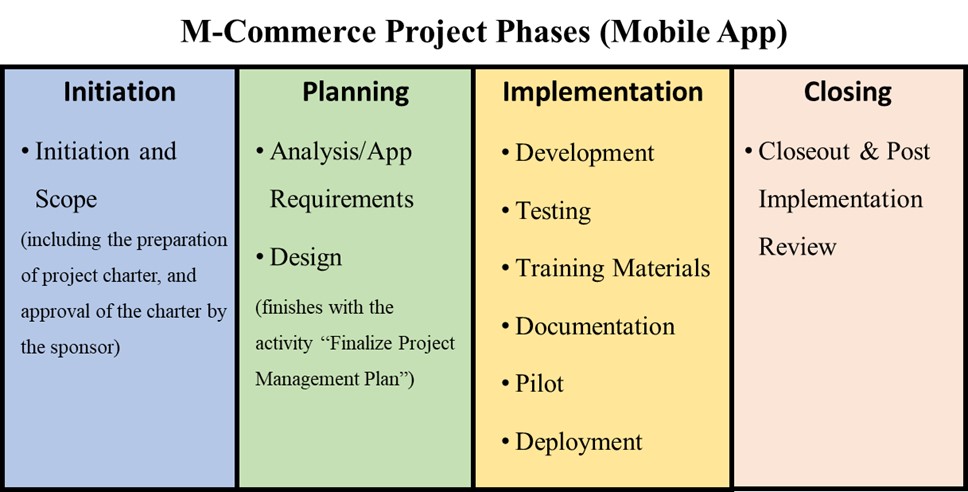Chapter 13. Closing the Project
13.1 Closing the Project
All projects end. Some of them are completed successfully when their triple constraints are within the acceptable ranges (e.g., budget is overrun by 7% when the range is 10%), project objectives are accomplished, and the stakeholders, in particular the client, are happy with the outcome. However, as discussed in Chapter 1 (see 1.4 Project Success), it is not uncommon for many projects to underperform due to various factors such as scope creep (i.e., uncontrolled expansion of product requirements and project activities), schedule delays, budget overruns, and miscommunication with stakeholders, or to fail that leads to early termination. In both cases, whether they are successful or not, projects need to be closed. Therefore, project managers must lead the process to formally close the project. This process helps project managers, teams, project sponsors, and internal and external stakeholders evaluate the project performance, and assess what went right and wrong. Figure 13.1, which is originally available in Chapter 1, exhibits the project life cycle if the project follows all the phases, and can make it to the end of the project by producing the deliverables.

Project completion is often the most neglected phase of the project life cycle. Once the project is over, it’s easy to pack things up, throw some files in a drawer, and start moving right into the initiation phase of the next project. Hold on. We are not done yet. When closing the project, the project manager reviews the project management plan to ensure that all project work is completed and that the project has met its objectives[1]. It is of high importance here to highlight that project closure cannot start unless the deliverables (e.g., a new mobile application for online shopping, a new data center for an insurance company, a newly developed diabetics medication, an apartment complex that is ready to accept new tenants, an improved business process, etc.) are ready to use. Therefore, the implementation phase in the project life cycle is completed with the acceptance of these deliverables (Figure 13.1) and signals that it is time to close the project.
13.1.1 Case Study: Closing out the Grocery LLC’s M-Commerce Project
Grocery LLC’s M-Commerce Project started on May 2, 2022, and the deployment was completed on November 3, 2022. The mobile app was subject to alpha testing first. Then, beta testing was carried out during the “Pilot” phase, where customers installed the beta version on their smartphones and did their online shopping. During the implementation of the beta version, all the feedback from customers and their mobile devices was evaluated and the bugs and problems were corrected. The inspection and acceptance committee was composed of Grocery LLC’s three representatives from the IT department, two representatives from the Operations department, and two store managers. The committee checked the final version and didn’t find a problem that may hinder the launch of the mobile app. The sponsor approved the sign-off after they received the inspection and acceptance report. Finally, the mobile app was introduced to Android and Apple online stores and is ready to use by online customers. Now, customers can log in with their usernames and passwords, browse items, add them to their carts, proceed to checkout, and complete their payments. We can start the closing phase since the deployment has been completed. As seen in Figure 13.2, “Closeout & Project Implementation Review” can start as the deployment is completed.

The project’s closeout activities are given in Table 13.1.
Table 13.1: Closeout Activities of Grocery LLC’s M-Commerce Project
| WBS Number | Activity & Pot Implementation |
| 10 | Closeout & Post Implementation Review |
| 10.1 | Document lessons learned |
| 10.2 | Archive all documents |
| 10.3 | Complete all pending payments |
| 10.4 | Final meeting with stakeholders to close the project |
| 10.5 | Disband the team |
We will refer to this case study in the following sections when needed.
13.1.2 Key Activities to Consider while Closing the Project
The key activities when we close out the project can be listed below:
- Ensuring that all tasks are completed, and the deliverables have been checked and approved by the client (or its inspection and acceptance committee).
- Collecting project reports and documents and making sure that all project documents and deliverables are up-to-date.
- Making sure that all issues (e.g., disputes with vendors, conflict with stakeholders, legal issues, issues in compliance with standards) are resolved.
- Ensuring that all costs are charged to the project.
- Releasing the final deliverables to the project sponsor, the internal and external client, and appropriate stakeholders.
- Disseminating information to all the stakeholders to formalize acceptance of the project, and its deliverables (products or services).
- Notifying all the stakeholders of the project completion.
- Terminating supplier and vendor contracts.
- Consulting with the legal department to ensure that there are not and won’t be any legal issues that may result from the contracts and legally binding documents.
- Releasing project resources (e.g., team members, facilities, equipment, materials).
- Conducting a post-implementation review including a discussion about the lessons learned.
- Finishing the paperwork, archiving, and storing all the project information including the lessons learned document in an organizational repository.
- Ensuring that all the project information can be accessed easily (e.g., cloud storage, physical files) by the current project team and future project managers and teams.
- Project Management Institute. (2017). A guide to the Project Management Body of Knowledge (PMBOK guide) (6th ed.). Project Management Institute. ↵

